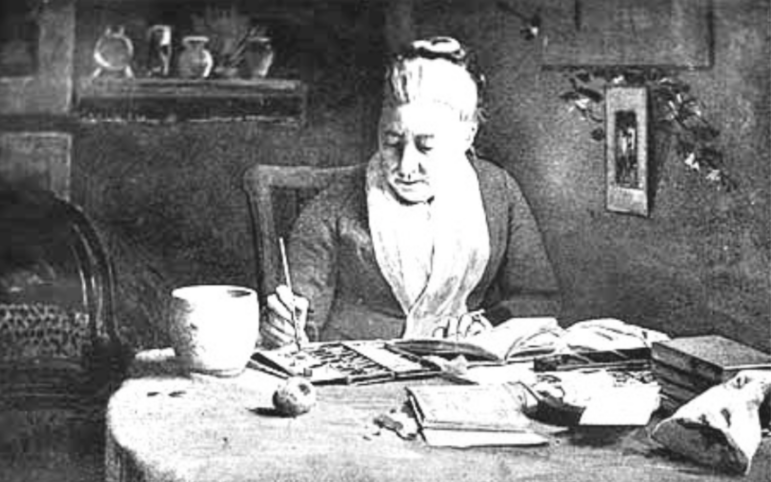
This article is part of a series on local history provided by the Historical Society of Watertown. It was written by Joyce Kelly, Board member of the Historical Society of Watertown. Joyce writes articles for the newsletter and is the newsletter editor. This was published in our January 2009 newsletter, “The Town Crier.”
ELLEN ROBBINS (1828 – 1905) – A WATERTOWN ARTIST
Watertown residents may be surprised to discover the many prominent people who called Watertown their home. Ellen Robbins (1828 – 1905) was a well-known 19th century watercolorist who was born, grew up and lived in Watertown most of her life. Ms Robbins specialized in natural subjects, especially flowers. She had a lucrative career selling her paintings and teaching students in Boston. She also painted on china.
Ellen Robbins was born in 1828 and lived on Pleasant Street near the dam by the Charles River. She was the youngest of seven children and describes herself as a “weakly” child for she was born with what she describes as a “lame foot.” Her father died when she was 2 years old, leaving the family in financial difficulty. Shortly before this time, her father James’ small soap factory had
burned down.
Ms. Robbins has written a good deal about her life and about living in Watertown. She wrote several articles around the turn of the last century about what Watertown was like “In The Old Times” that were published in the Watertown newspaper The Enterprise. In 1896 she wrote a two-part article called “Reminiscences of a Flower Painter” for New England Magazine. Information from that article is used here for this newsletter article, as are her quotes. From her earliest recollections she always had an eye for color and “looked at the juice of beets with longing to utilize that rich crimson.” Her first box of paints was bought for her, while still a young girl, by her aunt. Ellen admits that she never had the ability to draw figures, though she often did when she was younger, perhaps for the chance to use a wide variety of colors to paint an apron or a bow on a figure’s dress.
As she began to grow up she was expected, along with the rest of her sisters, to contribute something for the support of the family. This was accomplished in the way of needlework. Ellen did not enjoy needlework and longed for the end of the workday as she often planned to use the last bit of daylight for her painting.
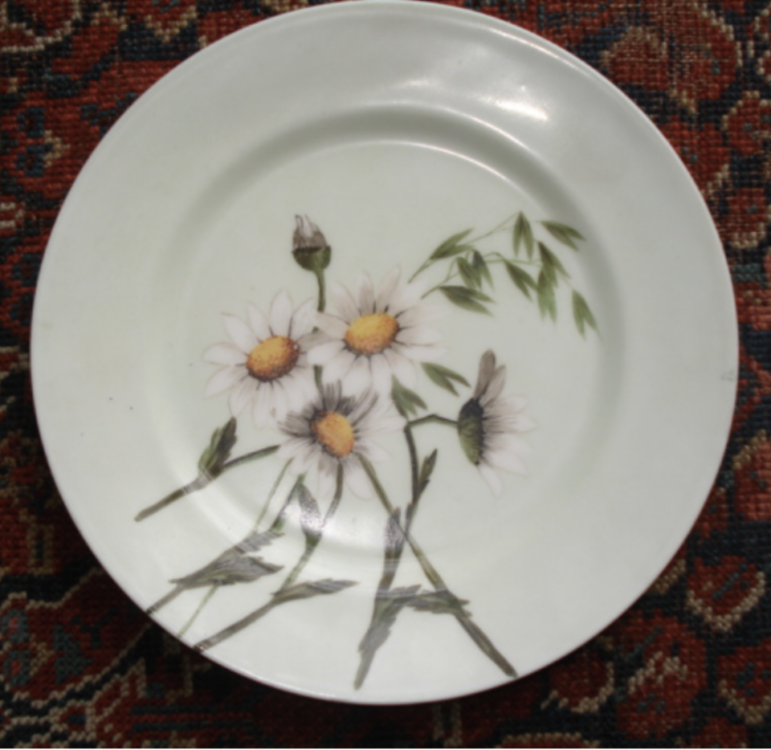
She soon began studying informally with a cousin’s governess who taught drawing from lithographs, mostly of bridges and guide-posts. Some time later she was given two lessons in papier mache painting by Maria White (who later married James Russell Lowell). Ellen felt that this “taste of the fine arts only stirred in my breast a determination to do something that would be a credit to me.” She was encouraged to continue to practice painting by several friends and relatives who took an interest in her painting. As she grew older she yearned for a chance to receive formal instruction in watercolors.
From a very young age, Ellen had a great appreciation of the beauty of nature. She especially loved wildflowers. She spent every spring for a number of years in Orford, New Hampshire, visiting with her mother’s cousins. One day she “went into the woods, brought home the wild flowers and painted them the way they looked to me.”
Her cousin suggested that Ellen be sent to the School of Design on Summer Street in Boston. After spending a year there she studied at the Merrimac Printworks. She attempted to draw designs for the Pacific Mills in Watertown and the Manchester Printworks. Drawing designs for fabrics was something Ellen could not master. The company agent told her “my trying to design was like an apothecary’s boy trying to practise medicine.” (In later years that same agent’s wife took lessons from her in watercolors.)
She decided to give up trying to design for fabrics and “paint pictures that would be attractive enough to find a sale.” She began studying with Stephen Salisbury Tuckerman’s School of Design. At this point she had never painted a flower in water colors. When she left Mr. Tuckerman’s school she was “able to draw flowers with ease, and to color them.” She was 20 years old.
She began to pick flowers and paint them. She painted spring flowers as they came and had them bound in books of 20 pages. They sold for $25 per book. (One was purchased by Marchioness de La Vallette, who was a niece of Edmund Fowle’s and was living in Paris.) She painted autumn leaves, bound them in books, and sold them as well. It was at this time that Ellen felt her “good fortune had begun.”
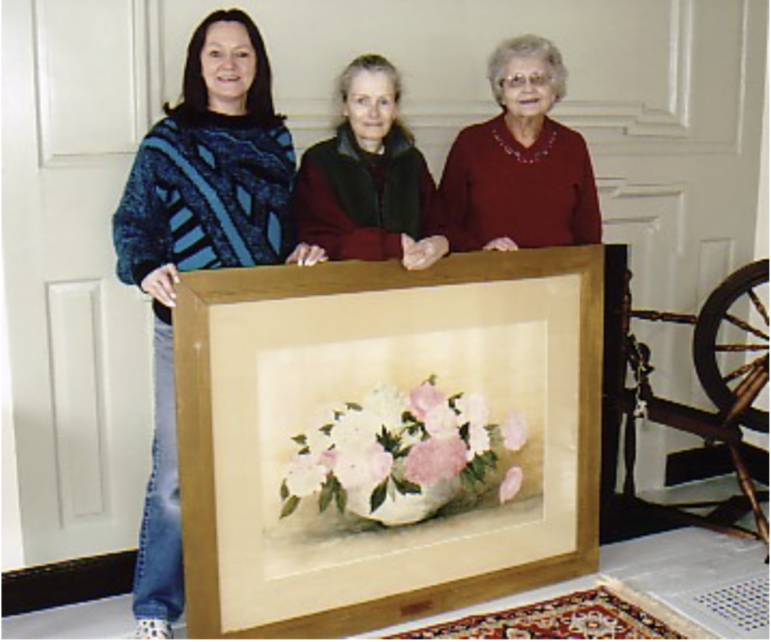
Ellen was invited to exhibit some of her paintings in the Studio Building in Boston. Several people asked if she gave lessons in painting. She did not feel that she had sufficient talent and knowledge to teach, but she agreed to teach a class of seven students. This led to a great demand for her as an instructor and she found herself giving lessons in private homes at $150 per session.
At the urging of Margaret Foley, the sculptor, Ellen approached Mr. Doll of Soule’s store on Summer Street in Boston and asked if he would be interested in displaying and selling some of her flower paintings in his store. She recounts, “So one morning I found myself in the picture store, trembling at my boldness in offering my paintings …” After looking at them he happily agreed to take them. Within 10 days they had all sold and Ellen was asked to bring in more. Rev. Henry Ward Beecher was her foremost patron (brother of Harriet Beecher Stowe, author of Uncle Tom’s Cabin).
She now had to keep up with the demand of her clientele. She took a studio in the Lawrence Building on the corner of West and Tremont Streets, where she could teach classes in addition to keeping her private lessons. She, herself, began taking lessons in oil painting. Ellen was busier than she could ever have imagined. “My pictures were in great demand, and everything seemed to help me, for I was almost alone in the painting of flowers, and had relatives who were interested in my success, helping in a financial way, which is so important when one is staring out.”
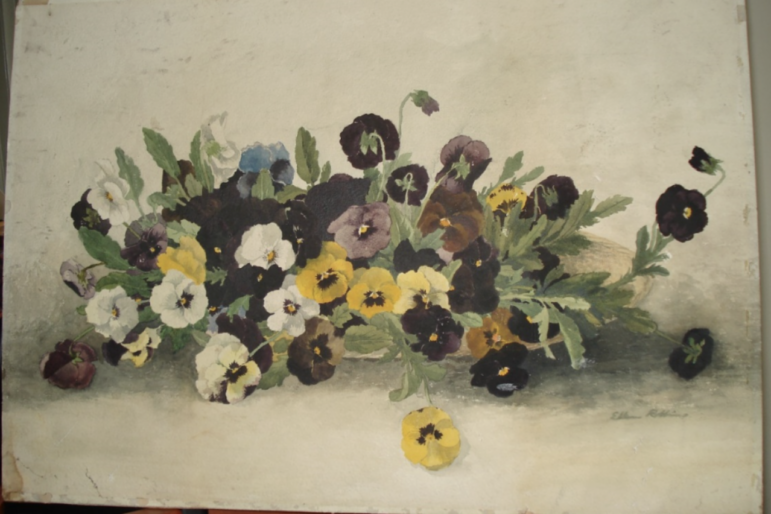
It was at this time that she decided to paint a set of bedroom furniture. It was painted with poppies, morning glories and ferns while the background was black then shellacked. This project was carried out at her house in Watertown. It was displayed in Mr. Doll’s store and purchased by Rev. Henry Ward Beecher for $1,000.
Soon after her cousin, Wellesley College founder Henry Fowle Durant, (who was a grand-nephew of Edmund Fowle’s) asked her to paint the frieze in the “Browning Room” at the college.
“It was a difficult thing to do”, Ellen reported but Durant was quite satisfied with the result. (This
room is gone.)
Ellen continued to paint flowers of all kinds. The public loved the results and purchased them eagerly. She taught and maintained three studios, one being at 6 Beacon St. “My flowers
were bought by people in California and indeed all over the country.”
She decided to try “fresh pastures”, traveling to Bar Harbor, Maine. She loved the area and, after two summers spent in a hotel, decided to build a studio. She continued to paint and sell her
paintings there for many years. She then moved on to the Isles of Shoals, Appledore, off the coast of New Hampshire, where she had spent several summers. She and poet/writer Celia Thaxter (another one-time Watertown resident) were friends. Flowers in Ms. Thaxter’s garden were the subject of many of Ellen’s paintings, which also sold readily to the public.
In 1873, Ellen and her sister, Martha, went to Europe. They traveled to England, France, Germany and Switzerland. She always carried her sketchbook with her and painted as often as she could. Ellen continued traveling in the United States and found natural beauty everywhere she went – and painted it.
In 1876 Ellen exhibited her paintings at the Centennial Exposition in Philadelphia. Many of her wildflower paintings were reproduced as color lithographs by Louis Prang and Co. (who is credited with starting the American greeting card industry) and sold to a wider audience. In 1893, Rev. Edward Rand, pastor of the Church of the Good Shepherd and President of the Historical Society from 1891 to 1903 remarked that Miss Robbins’ paintings “were so natural the bees might light on them.”
Ellen Robbins died in 1905. Her cremated remains are buried in Common Street Cemetery.
Ms. Robbins’ paintings can be seen all over the country, including at art museums in New
York, Denver, Brooklyn, Pennsylvania, Indianapolis, Richmond, Birmingham and Worcester and upstairs in our own Watertown Free Public Library.
The Historical Society of Watertown owns a large collection of Ellen Robbins’ work and it is currently on exhibit at the Edmund Fowle House at 28 Marshall St. The house is open for
tours the third Sunday of the month from 1:00 to 4:00 PM.
Recently one of our Council members attended a local indoor yard sale and was thrilled to come across a painting of pansies done by Ellen Robbins. It is in need of restoration – matting, framing and cleaning. There is no money in the budget for collections restoration. If you are interested in helping us restore this painting, please send your check Attn: Ellen Robbins Pansies Restoration. (Editor’s Note 1/26/23: Funds were raised to restore this painting. It was framed and is
hanging in the front hall of the Edmund Fowle House.)
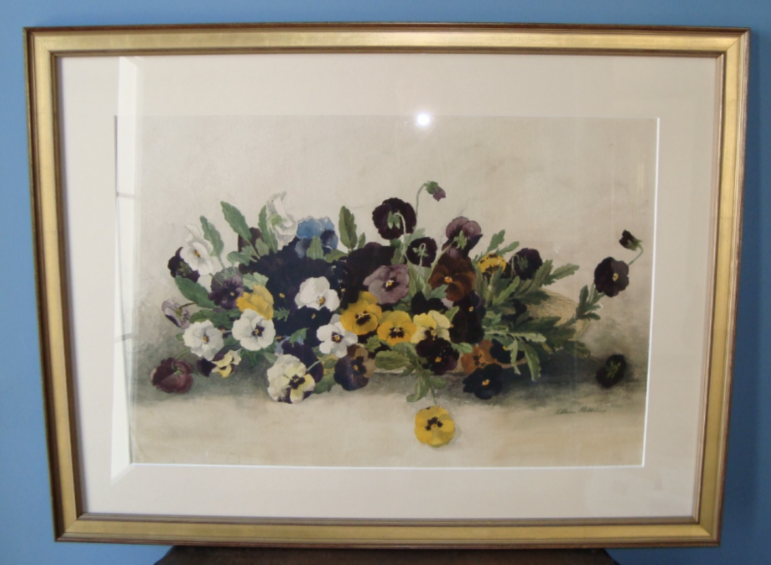
Thank you Joyce for the very informative article regarding Ellen Robbins. It is also important to note that the community recognized Ellen’s contributions by naming Robbins Road after her.